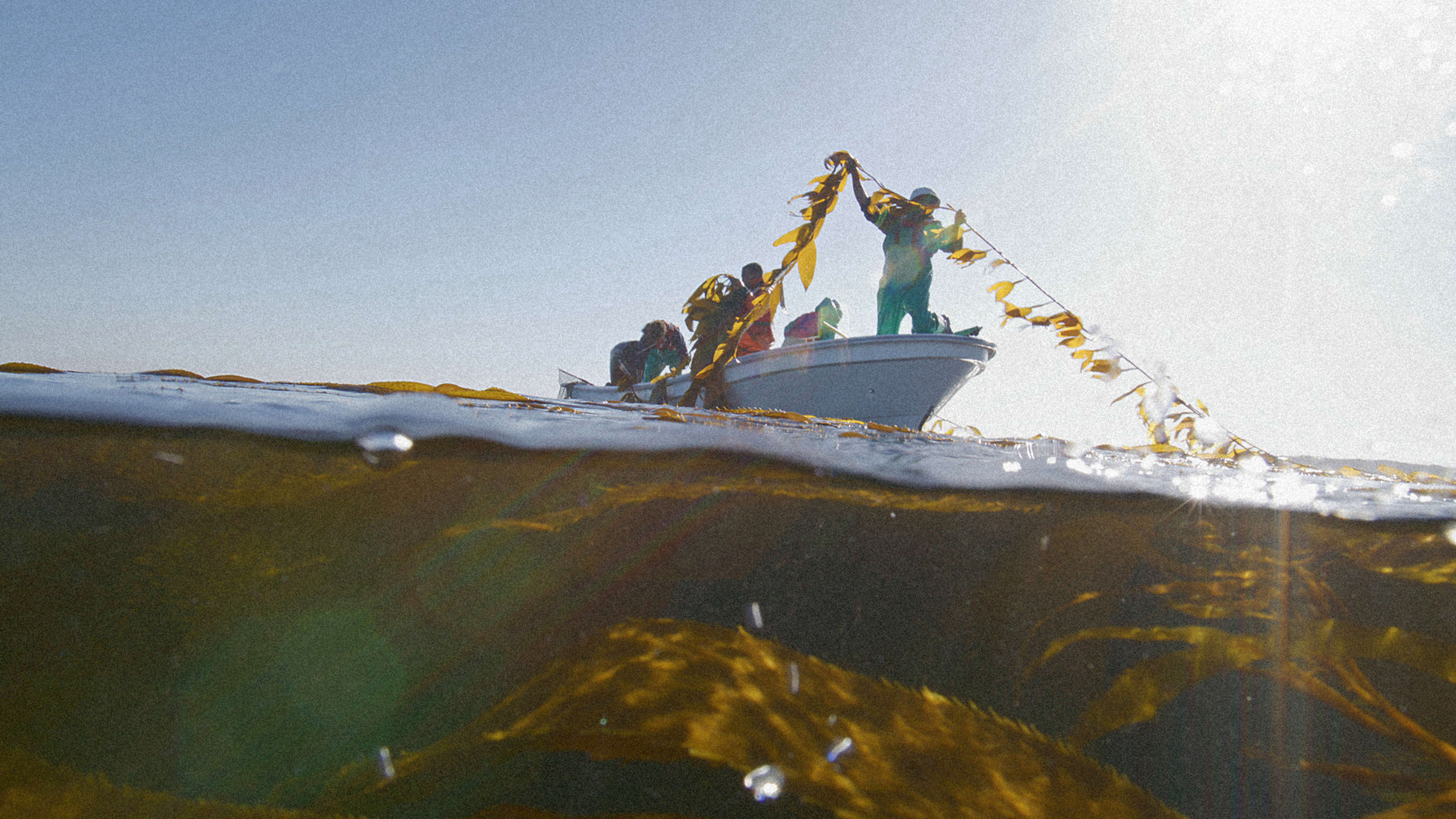Kelp Blue is investing in growing kelp in Namibia to grow an ingredient that can help farmers and make an alternative leather.
[Photo: Kelp Blue]
In a remote corner of Namibia, near a ghost town that was once a diamond mining hub, a startup called Kelp Blue is trying to pioneer a new coastal industry.
Offshore, the company is now growing a mini-forest of giant kelp attached to the ocean floor. In the morning, a crew takes a boat out and harvests the kelp in small areas. They trim the ends of the algae a few feet below the surface of the water. Later this year, a robotic harvester will begin doing the same tasks at a much larger scale.
Giant kelp grows incredibly quickly—as much as two feet a day, according to some studies. Each strand of kelp is up to 164 feet long. As it grows, it captures CO2. The kelp forest also offers new habitat for marine life. When the company harvests the tips of the seaweed, the team processes it into an extract that can help farmers increase plant yields and improve soil health. The startup plans to use the leftover parts of the seaweed harvest to make a leather alternative.
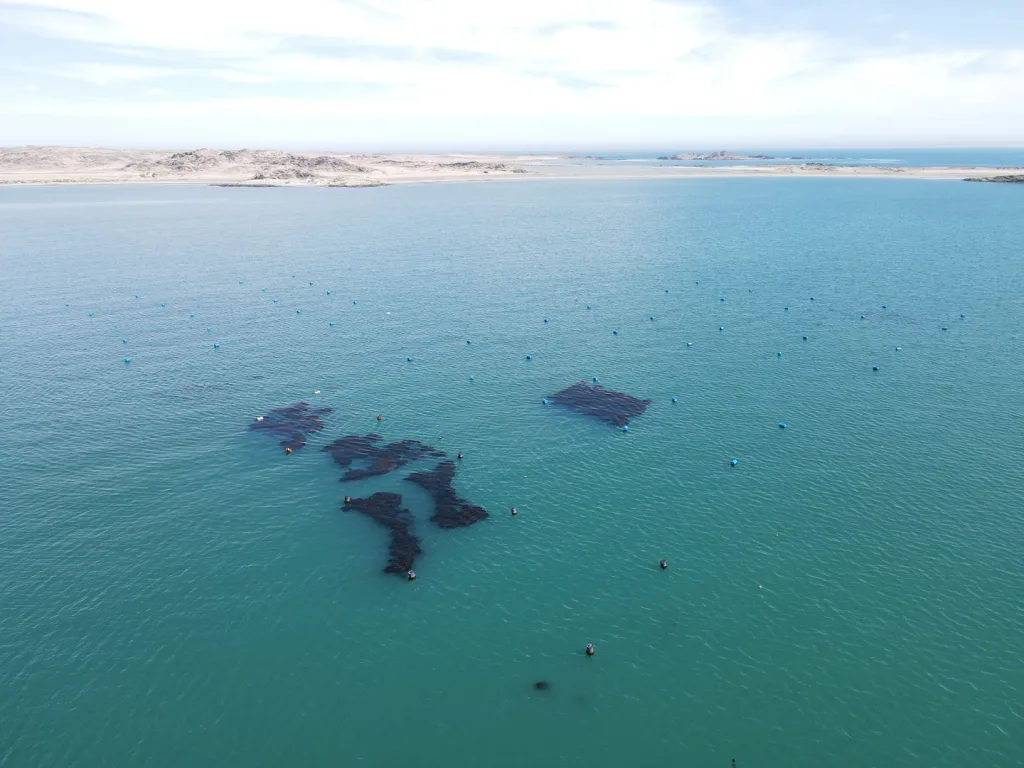
REINVENTING THE SEAWEED INDUSTRY
It’s a new approach to an old industry. Most seaweed is grown for food, in small-scale, labor-intensive operations. “This is an activity that hasn’t really changed or modernized for three or four hundred years,” says Daniel Hooft, the founder and CEO of Kelp Blue. “But it has huge potential in terms of end markets if you do it at large scale. If you want to achieve the carbon drawdown and the biodiversity boost in any sort of meaningful sense, then you have to do it at large scale as well.” Other startups, like Phykos, are also beginning to use seaweed as a tool for carbon removal.
Hooft, who is Dutch, previously worked in the oil industry, but wanted to do something positive for the climate. “The trigger was the slow realization that despite being staffed by good human beings, the oil industry is not going to be able to change from the inside,” he says. “The short-term shareholder value pressures are too great for management teams to be able to do the right thing, today, about long term shareholder (and stakeholder) value.
“Hence morally questionable decisions are routinely being made, and ‘everyone else is doing it’ became a steadily more prevalent excuse in the C-suite. I had been hoping to change the oil industry but realized that it was changing me. I felt I was standing on the wrong side of the defining issue of our age.”
He started the business after learning about the climate benefits of seaweed. After diving into research, he decided to focus on giant kelp, a species that grows naturally along the California coast. The smaller seaweed that’s traditionally grown in the industry, for foods like sushi, has to be fully replanted each season.
Giant kelp, by contrast, can keep growing for at least seven years. That means that it takes much less work to cultivate; the size also makes it easier to harvest. As the ends of the kelp canopy are trimmed, the rest of the kelp forest provides shelter for fish and other marine life.
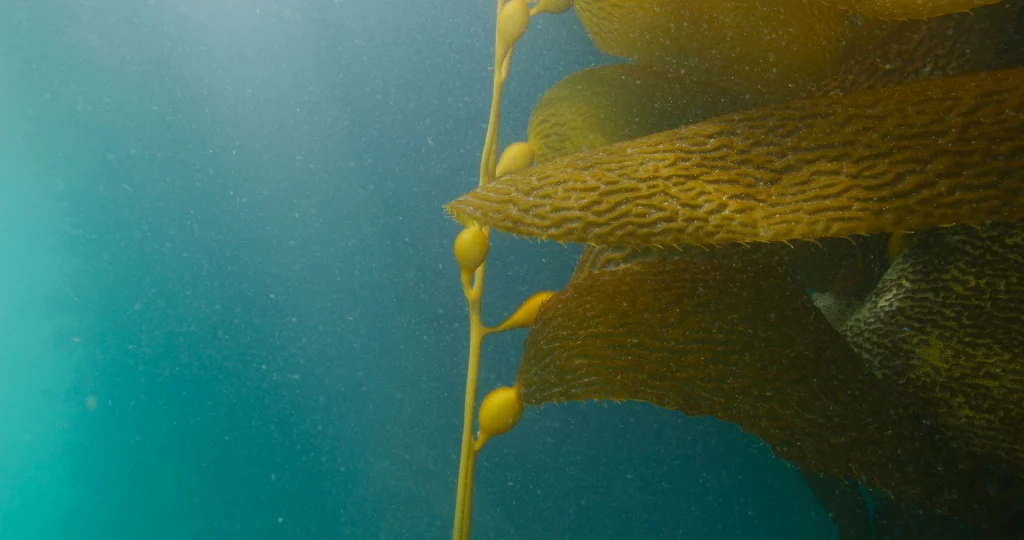
WHY NAMIBIA COULD BE A HUB FOR GIANT KELP
A former oil industry colleague helped Hooft map ideal locations for growing giant kelp, based on factors like wave height, the condition of the seabed, and how currents deliver nutrients. Namibia was at the top of the list. Cold, nutrient-rich water from the deep ocean flows into the area. Even as ocean heatwaves continue, the local temperature should stay cool, a perfect fit for giant kelp.
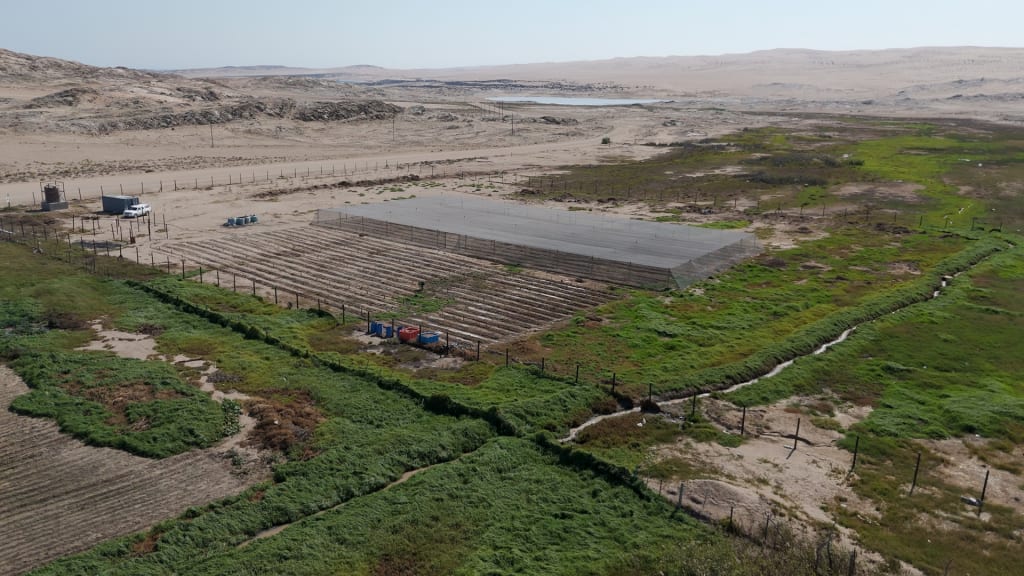
The company’s first project, near a small coastal city surrounded by desert, is bringing jobs to an area where the diamond industry previously boomed and and then declined. Overfishing also decimated the local fishing industry. “There aren’t many jobs that have future foresight, and not many complex, technical jobs,” Hooft says.
Kelp Blue now employs dozens of Namibians. In the company’s lab, young Namibian women grow kelp spores—starting at one or two millimeters in size—until the algae is large enough to attach to lines that can be planted in the ocean. Another team works on building the infrastructure in the water.
At the first farm, the lines are attached to “reef blocks” on the ocean floor. The structures double as habitat for crayfish and octopus (in turn, the animals help keep down populations of species that eat the kelp, and mussels that could weigh down the farm and sink it). In deeper water, screw anchors attach to the silty seabed; Hooft says that the infrastructure has almost no impact on the existing ecosystem.
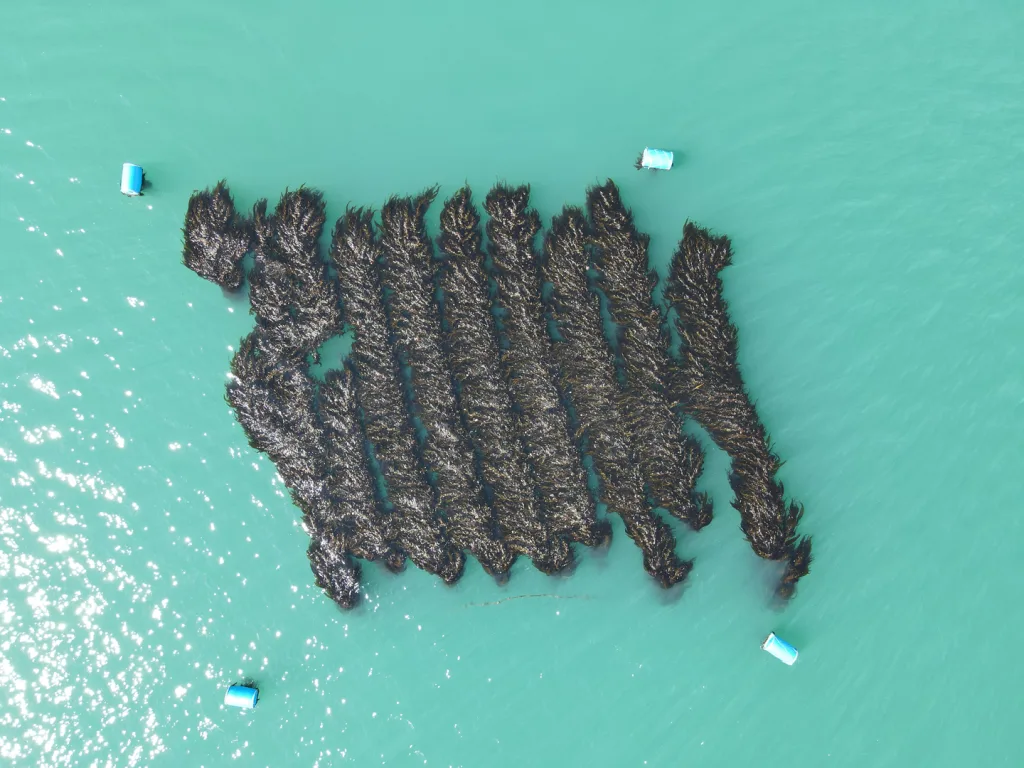
In the area, which has been heavily overfished since the 1950s, the first kelp forest is already helping boost biodiversity. Hooft compares it to “planting islands of greenery on the periphery of a spreading desert.” To track animal life, the company’s nonprofit arm uses acoustical tools to identify species in the water.
The researchers also uses environmental DNA sampling, looking for traces of DNA in the water left behind by passing animals. Before the kelp forest was established, there were around 140 species. After only months, there are now around 900 species.
Nearly every morning, a team of workers from the company takes a 20-minute boat ride to the kelp forest. Using drones, they identify the best spot to harvest. The work happens manually now, but a large new robotic harvester is currently in testing in the Netherlands. It’s covered in solar panels, and 50 feet long. Like a combine in a corn field, it can quickly move through the canopy to harvest the top of the kelp. In three months, when the kelp has regrown, the machine can harvest more.
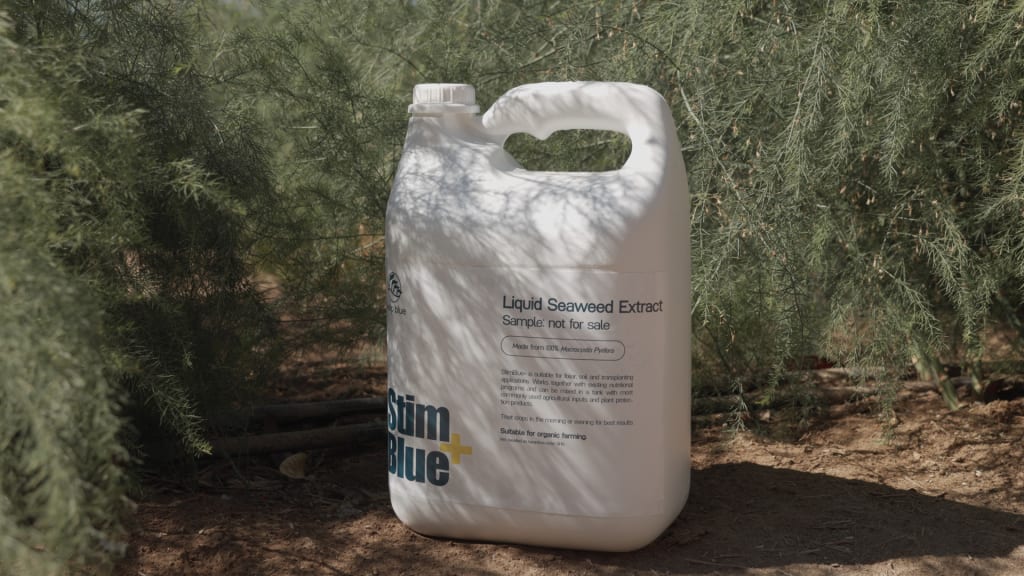
The harvested kelp goes to the company’s local factory, where it’s processed into its first product, a “biostimulant” that’s beginning to be sold to European farmers. Initially, the startup planned to sell kelp to other manufacturers, but that plan quickly changed. “We realized that there’s nobody in the industry yet who is ready to take the sort of hundreds of thousands of tons that we want to produce a year,” Hooft says. “If we wait for them, we would die from not being able to sell product right away. Also, the value add component is where the money is made.” The startup is beginning to talk to fashion brands about its second product, a seaweed-based leather alternative.
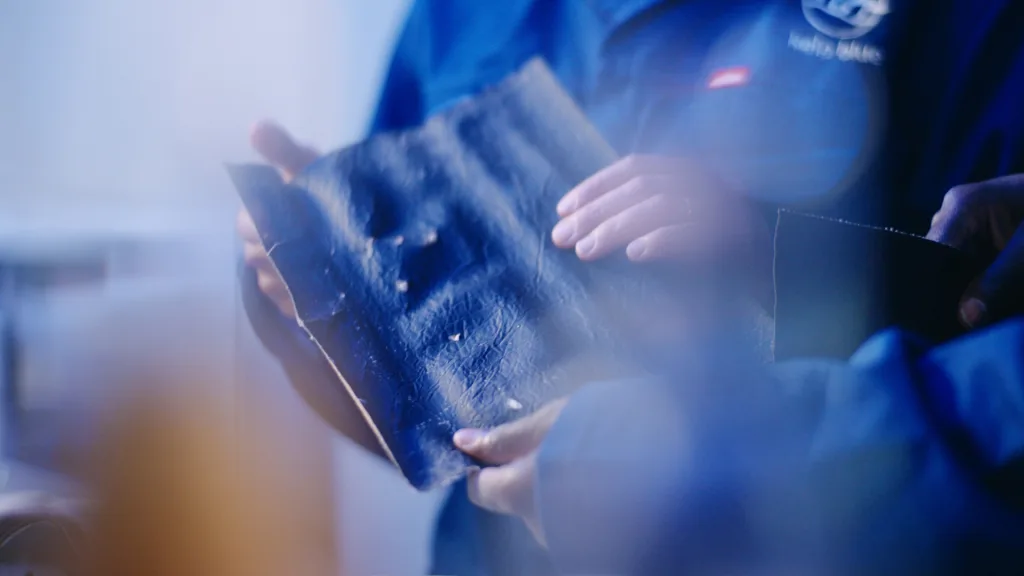
HOW KELP HELPS THE CLIMATE
It also soon plans to begin selling carbon credits. As the kelp grows, some of it breaks off and sinks in the deep ocean, sequestering the carbon for centuries. “Basically, you’re sort of imitating how oil fields were generated in the first place,” says Hooft. (Separately, because the company’s product helps farmers improve soil health, it can also help farms capture more carbon.)
The company is now one of the finalists in the X Prize for carbon removal. The prize requires that projects have the potential to remove a gigaton of CO2—a billion metric tons—in a year. That’s an enormous amount, and would require Kelp Blue to build sprawling offshore farms.
Hooft readily acknowledges that the work has to happen in smaller patches. “You don’t want to be putting monolithic forest in the water—you want to be imitating how nature does this thing,” he says. Still, he says that there’s potential for this to happen at a large scale. Technically, the gigaton scale is possible; that might mean hundreds of millions of hectares of kelp farms.
Right now, the team only has one 35 hectare farm, or a little less than 100 acres. Nearby, it’s experimenting with structures designed to survive farther out in the ocean. In New Zealand, another project may soon begin at a mussel farm. In Alaska, the company is waiting for the final permits to begin another project later this year. Each project is a new challenge. “Because it’s a different ecosystem, you have to sort of relearn everything from scratch,” says Hooft.

